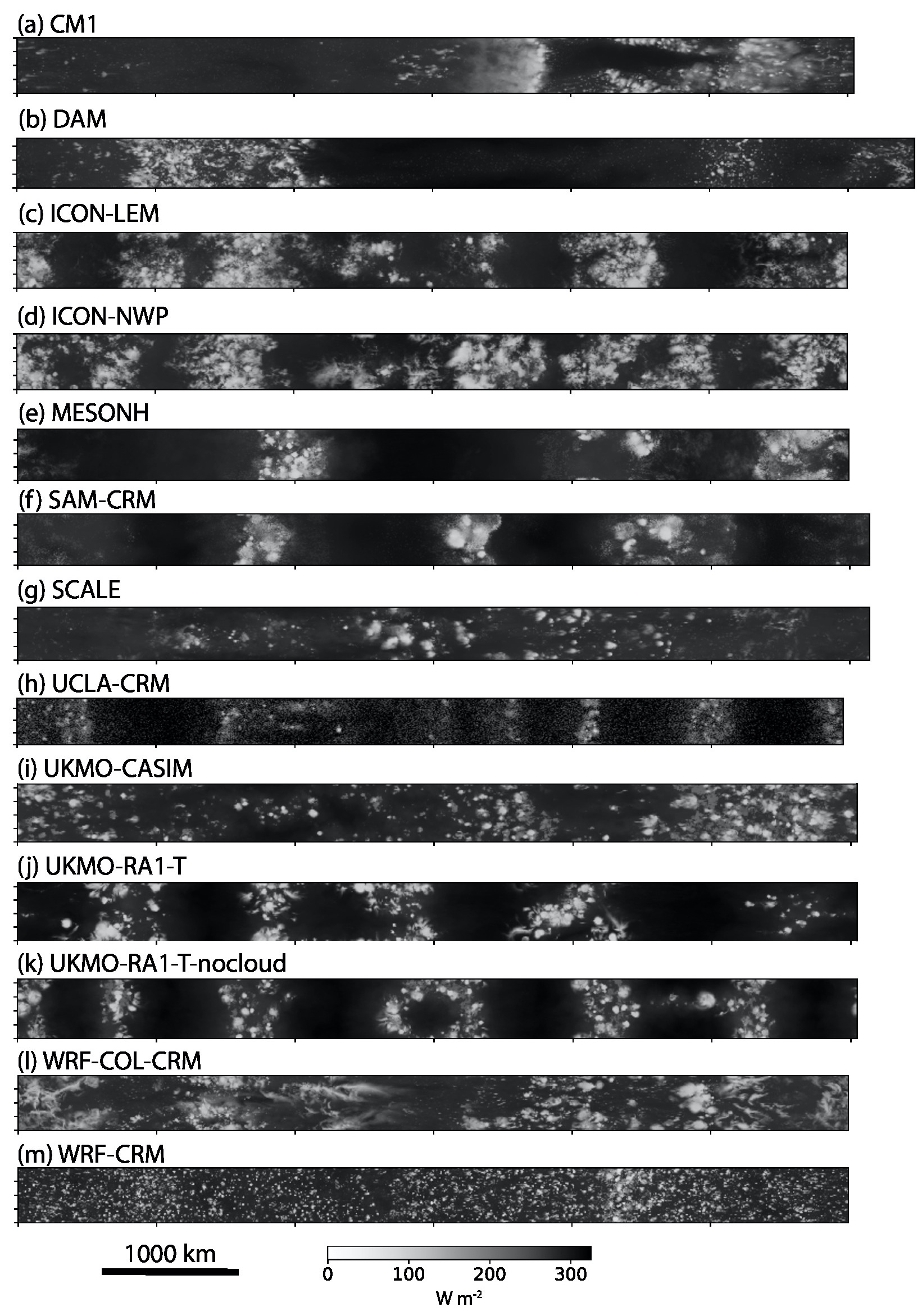Wing, Stauffer, ..., Romps, ..., Clouds and convective self-aggregation in a multi-model ensemble of radiative-convective equilibrium simulations, JAMES, 2020
Paper
Description
Radiative-convective equilibrium (RCE) is a state of the atmosphere in which radiative cooling of the atmosphere is balanced by convective heating without any large-scale circulation: the only "circulation" is the fast ascent in clouds and the slow descent in clear air. Although simple, RCE simulations have provided a great deal of insight into the workings of Earth's atmosphere, including the processes that set the relative humidity, convective available potential energy, and cloud cover. RCE studies have also been used to study the clumping of clouds and convection, which often takes an exagerrated form in RCE simulations, and several studies using RCE to study this clumping have reported that the convection becomes clumpier with warming.
In this paper led by Allison Wing, over a dozen different collaborators contributed RCE simulations from over a dozen different models, including Das Atmosphärische Modell (DAM). Two surprises emerge from the analysis. First, there is a wide diversity of RCE states among the models. For example, see the distributions of high cloud in the figure below. Second, there is no consistent trend towards more clumping of clouds with warming: with warming, some models get clumpier while other models get less so. This intercomparison study will serve as a guide for future studies on which RCE processes are robust and which are not.
Snapshots of high cloud (as seen through top-of-atmosphere radiative flux) from 13 different cloud-resolving models simulating RCE in a channel domain.
